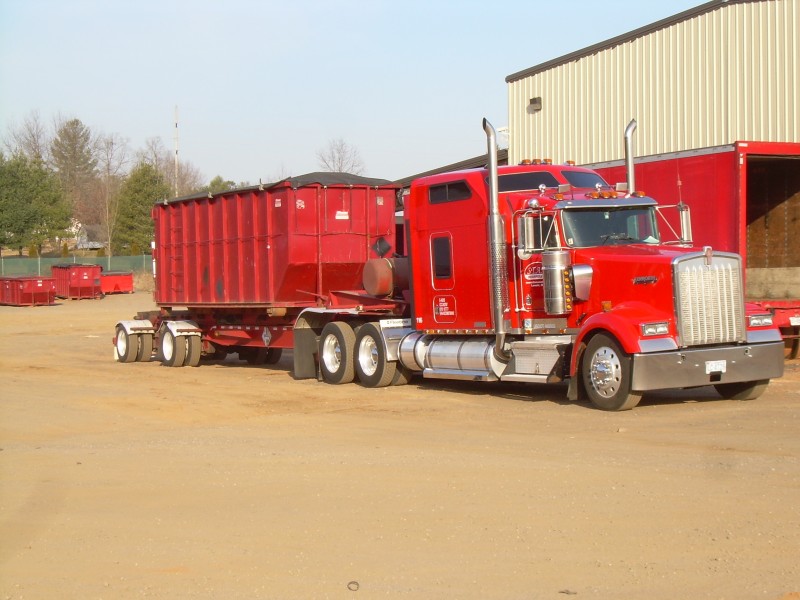What Does Hazardous Waste Transporters Mean?
What Does Hazardous Waste Transporters Mean?
This manifest should accompany the waste till its last destination and is used to track the wastes from cradle-to-grave – metal manufacturing. The capacity for contamination releases throughout the transportation of waste differs; the more dangerous the waste and the larger the volume that is carried,the more devastating the environmental/human health impact if a mishap occurs. clipart.
Wastes may likewise be launched while being packed or unloaded during transport. Approximately 4 billion heaps of regulated dangerous products are delivered within the United States each year with more 250,000 deliveries getting in the U.S. transportation system day-to-day. The Emergency Response Notification System (ERNS) database of the Epa (EPA) reveals that from 1988 to 1992 approximately nineteen transportation accidents including poisonous chemicals happened every day.

Department of Transport (DOT) requires that placards recognizing the kind of hazardous material being transferred be placed on the beyond any car transferring harmful materials or wastes – identification. Placards are utilized to figure out prospective dangers in case of a spill and are put on all 4 sides of an automobile so that HAZMAT groups,fire,emergency situation,medical,and other workers who react to accidents might quickly identify the contents and associated threats (toxic waste).
The DOT categorizes materials based upon nine danger classes represented by symbols. The classes are explosives,gases,flammable liquids,combustible solids,oxidizers,dangerous products,biohazards,radioactive materials,corrosives,or other regulated products. The paths that transporters of hazardous waste usage need to be thoroughly thought about to reduce the danger of an accidental release.
The Facts About Hazardous Waste Transportation Companies Revealed
The type of highway or roadway and the weather conditions along the path need to likewise be thought about. Threat analysis might become important in picking routes for dangerous waste transport in order to minimize unfavorable impacts to human health in case of an accidental release. Due to rapidly decreasing area in metropolitan land fills,authorities have been required to find alternate areas for municipal garbage disposal (municipal waste).
Depending on the area of these rural facilities,it may be required to carry large amounts of wastes by a variety of techniques,usually by truck,railway,or barge (chemical waste disposal). Lots of people are concerned about the transportation of the waste through their neighborhoods and the dangers included – waste water. People are likewise worried that the local waste from city areas might be contaminated with poisonous chemicals or compounds that might infect regional drinking water supplies.
This has actually caused the practice of selling waste to developing countries for disposal at a much lower expense. This international waste trade might be prohibited in some circumstances,however the hefty amount paid to those who accept the wastes stays tempting to establishing countries (waste management). However,the actual composition of the wastes gotten by establishing nations is frequently misrepresented by those selling the waste.
Sell contaminateds materials is an international problem. About 10 percent of all contaminateds materials generated worldwide cross worldwide limits. A big portion goes from industrialized nations to establishing nations where disposal expenses are lower. Although developing nations may do not have the financial and technical capacities to tidy up harmful waste releases in their countries,these countries nonetheless are sites for treatment,recycling,and disposal of wastes from abroad – hazardous materials.
Facts About Hazardous Waste Manifests Revealed
Under the Convention,sell harmful wastes can not occur without the approval of the importing nation and can not take place under conditions that are assessed as not environmentally sound (in india). Since April 2002,150 nations had ratified the convention. nuclear waste. A brand-new procedure adopted by the convention in 2000 provides the first global structure establishing liability for damages that might result from the transport or disposal of contaminateds materials throughout foreign borders.
( 2001 ). Contaminated Materials Management. Boston: McGraw Hill. Watts,Richard J. (1998 ). Hazardous Wastes: Sources,Pathways,Receptors (collection process). New York: John Wiley & Sons. U.S. Department of Transportation. “HAZMAT Security.” Available from http://hazmat.dot.gov . U.S. Epa. “Waste Transport.” Readily available from http://www.epa.gov/ebtpages/wastwastetransportation.html . Due to overcapacity at the Islip landfills,New york city,authorities negotiated with Jones County,North Carolina,to accept 3,200 loads of local garbage in March 1987.
When authorities discovered healthcare facility wastes in the garbage,North Carolina contradicted it for worry that it might pollute local water products. Louisiana,Mexico,Belize,British Honduras,and the Bahamas all contradicted the polluted trash and the Mobro went back to New york city. The Mobro then started a six-thousand-mile,six-month voyage looking for some place to take the trash.

Not known Details About Hazardous Waste Disposal
This paper offers an illustration of how a geographical details system (GIS) can be utilized in danger analysis. It concentrates on liquid contaminated materials transport and makes use of records archived by the London Waste Regulatory Authority. This data source provides information on the origin and destination of each waste stream,but not the path followed during transport (business).
Information were also put together on population distribution and ground-water vulnerability,hence supplying a basis for examining the possible effects of a waste spillage during transport – metal manufacturing. 4 routing situations were carried out to recognize sections of roadway which regularly saw rush hour – truck. These simulations likewise highlighted that some interventions could cause run the risk of tradeoffs rather than danger mitigation.
One of the most important aspects of waste transport and disposal is guaranteeing waste streams are correctly analyzed and classified. us ecology. We have the proficiency and knowledge to properly assess your waste streams and ensure they get to their locations securely and effectively. Our bags and waste containers are approved for Transport of Dangerous Product (TGD) and USEPA (United States Environmental Security Firm) noted waste streams,along with hazardous oilfield bags – household hazardous.